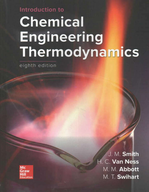?The data in Table 10.2 are experimental values of \(V^{E}\) for binary liquid mixtures
Chapter 10, Problem 10.29(choose chapter or problem)
The data in Table 10.2 are experimental values of \(V^{E}\) for binary liquid mixtures of 1,3-dioxolane(1) and isooctane(2) at 298.15 K and 1(atm).
(a) Determine from the data numerical values of parameters a, b, and c in the correlating equation:
\(V^{E}=x_{1} x_{2}\left(a+b x_{1}+c x_{1}^{2}\right)\)
(b) Determine from the results of part (a) the maximum value of \(V^{E}\). At what value of \(x_{1}\) does this occur?
(c) Determine from the results of part (a) expressions for \(\bar{V}_{1}^{E}\) and \(\bar{V}_{2}^{E}\). Prepare a plot of these quantities vs. \(x_{1}\), and discuss its features.
Text Transcription:
V^E
V^E = x_1x_2(a + bx_1 + cx_1^2)
x_1
bar V_1^E
bar V_2^E
Unfortunately, we don't have that question answered yet. But you can get it answered in just 5 hours by Logging in or Becoming a subscriber.
Becoming a subscriber
Or look for another answer
